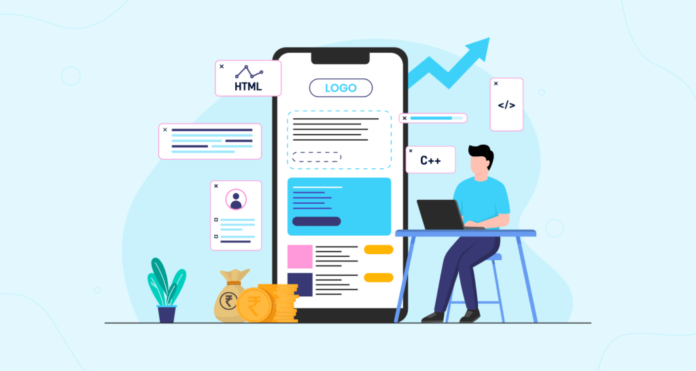Creating an app can be a daunting task, but breaking it down into manageable steps makes the process straightforward. Whether you’re looking to build a mobile app or a web app, following a clear and structured approach ensures you don’t overlook any important details. In this guide, we’ll walk you through twelve practical steps to help you get your app up and running in 2025, whether you’re doing it on your own or working with a mobile app development company.
Step 1: Identify a Problem to Solve
The first step in creating an app is finding a problem that needs solving. A good app idea addresses a gap in the market or simplifies a process. This could be something you’ve noticed in your own life or an issue that has the potential to affect a large audience. By solving a specific problem, your app will have a clear value proposition that resonates with users.
Think about common challenges people face in their daily lives or industries that are ripe for innovation. Once you have a problem in mind, you can begin designing your app around providing a solution.
Step 2: Research the Market
After identifying the problem, your next step is to assess the market. Look at existing apps that address the same issue. What features do they offer? What are their strengths and weaknesses? By analyzing your competition, you can identify opportunities to create an app that offers something new or better than what’s already available.
Use app stores, forums, and social media to gather feedback on current apps. Pay attention to user reviews and ratings to spot gaps in functionality and user experience. This research will help you build a more effective app by learning from what works and avoiding common pitfalls.
Step 3: Define the App’s Features
Now it’s time to define what your app will do. List the core features that will solve the problem you identified. Focus qiuqiu99 on the features that are most essential for your app to function. As you move through the development process, you can always add more features, but starting with the basics helps keep your project focused.
Consider user-friendly features such as login systems, notifications, or integrations with other apps or services. Think about the user flow, from launching the app to completing the main task. Prioritize simplicity and usability over adding unnecessary functionality.
Step 4: Sketch Your App Design
Once you have a list of features, it’s time to sketch the app’s design. This can be as simple as drawing wireframes on paper or using a design tool to create digital mockups. The design should reflect the app’s purpose and be intuitive for users to navigate.
Create the main screens of the app, such as the home screen, settings, and the core functionality screens. Make sure that the design is clean, easy to follow, and aligns with your target audience’s needs. At this stage, focus more on the structure and flow rather than the visual details.
Step 5: Choose Your Development Approach
Next, decide on how you want to build the app. You have two main options: native development or cross-platform development.
- Native development involves creating separate apps for each platform (iOS, Android, etc.). This approach typically results in better performance and user experience but requires more time and resources.
- Cross-platform development allows you to write one codebase that works on both platforms. This can save time and cost, but it may have limitations when it comes to performance and platform-specific features.
Depending on your budget and timeline, you can select the most suitable approach for your app. If you’re unsure, consulting with a developer can help you make an informed decision.
Step 6: Choose the Right Tools and Technology
Selecting the right development tools is crucial. If you’re coding the app yourself, research the programming languages and frameworks best suited for your chosen approach. Popular options include:
- For native development: Swift (iOS), Kotlin (Android)
- For cross-platform development: Flutter, React Native, Xamarin
For backend development, you might consider using technologies like Node.js, Python, or Ruby on Rails. For databases, MySQL, MongoDB, and Firebase are widely used. Choose the tools that fit your project requirements and personal skill set.
If you’re outsourcing the development, your chosen tech stack will guide your search for the right developers.
Step 7: Develop the App’s Backend
The backend is the foundation of your app. It handles data storage, user authentication, and other critical tasks. During this phase, you’ll set up the server, database, and any necessary APIs that allow the app to interact with external services or databases.
Ensure that your backend is scalable and secure. You don’t want to run into performance or security issues down the line. If you’re unsure how to develop the backend, you can hire a backend developer or use backend-as-a-service (BaaS) platforms like Firebase or AWS Amplify.
Step 8: Develop the App’s Frontend
The frontend is what users see and interact with directly. This phase involves coding the interface and linking it with the backend services you set up. The frontend should provide a smooth and enjoyable experience, with easy navigation and visually appealing design.
Keep your target audience in mind as you build the user interface. The app’s design should be aligned with their situs qiuqiu99 expectations and preferences. Use components that are familiar and intuitive, such as buttons, forms, and menus. Don’t forget to test the responsiveness of the app on different screen sizes and devices.
Step 9: Conduct Testing
Testing is essential to ensure your app works as expected. Start with functional testing to check if each feature works correctly. Then, move on to user testing to evaluate the overall experience. Gather feedback from real users to identify areas that need improvement.
Test for bugs, glitches, and performance issues. You should also test the app’s compatibility with different devices, operating systems, and browsers. Common testing tools include Appium, Selenium, and TestFlight for iOS.
Make sure you fix any issues before moving forward, as even small bugs can affect the user experience and hurt the app’s reputation.
Step 10: Deploy the App
Once the app passes testing, it’s time to deploy it. If you’re launching a mobile app, this involves submitting the app to the Apple App Store, Google Play Store, or any other relevant marketplace. Follow the platform’s submission guidelines carefully to avoid delays in approval.
For web apps, deployment usually means hosting your app on a server and ensuring it’s accessible to users. Services like AWS, Heroku, or DigitalOcean can help you with hosting and managing your app’s infrastructure.
Make sure your app is ready for users to download and use, with all necessary documentation, privacy policies, and terms of service in place.
Step 11: Market Your App
Once your app is live, it’s time to attract users. Use various marketing strategies to spread the word about your app, such as:
- Social media: Promote your app on platforms like Instagram, Facebook, Twitter, and LinkedIn. Share compelling content that highlights the app’s features and benefits.
- Content marketing: Write blog posts or articles about the app and the problem it solves. This can help improve your app’s visibility and SEO rankings.
- App store optimization (ASO): Optimize your app’s title, description, and keywords to improve its discoverability on app stores.
- Paid advertising: Consider running paid ads on social media or search engines to target potential users.
The more exposure you get, the more likely your app is to succeed.
Step 12: Maintain and Update the App
After launching the app, your job doesn’t end there. Continuous maintenance and updates are crucial for keeping your app relevant and functioning properly. Regularly fix any bugs, improve features, and add new content to keep users engaged.
Pay attention to user feedback and address concerns promptly. If your app isn’t performing as expected, analyze the data to identify what’s working and what isn’t. Regular updates will help you stay ahead of the competition and improve the app’s long-term success.
Conclusion
Creating an app involves several crucial steps, from identifying a problem to solving and testing your app to marketing it to qiuqiu99.mom users. Following these 12 steps helps break the process into manageable tasks, making it easier for anyone—whether you’re an entrepreneur, developer, or hobbyist—to bring your app idea to life.
With the right tools, strategies, and persistence, your app can grow into a valuable asset that solves real-world problems and reaches users worldwide.
Start by clearly defining the problem, choose the right technology, and take it step by step—soon enough, you’ll see your app thrive in today’s competitive market.


